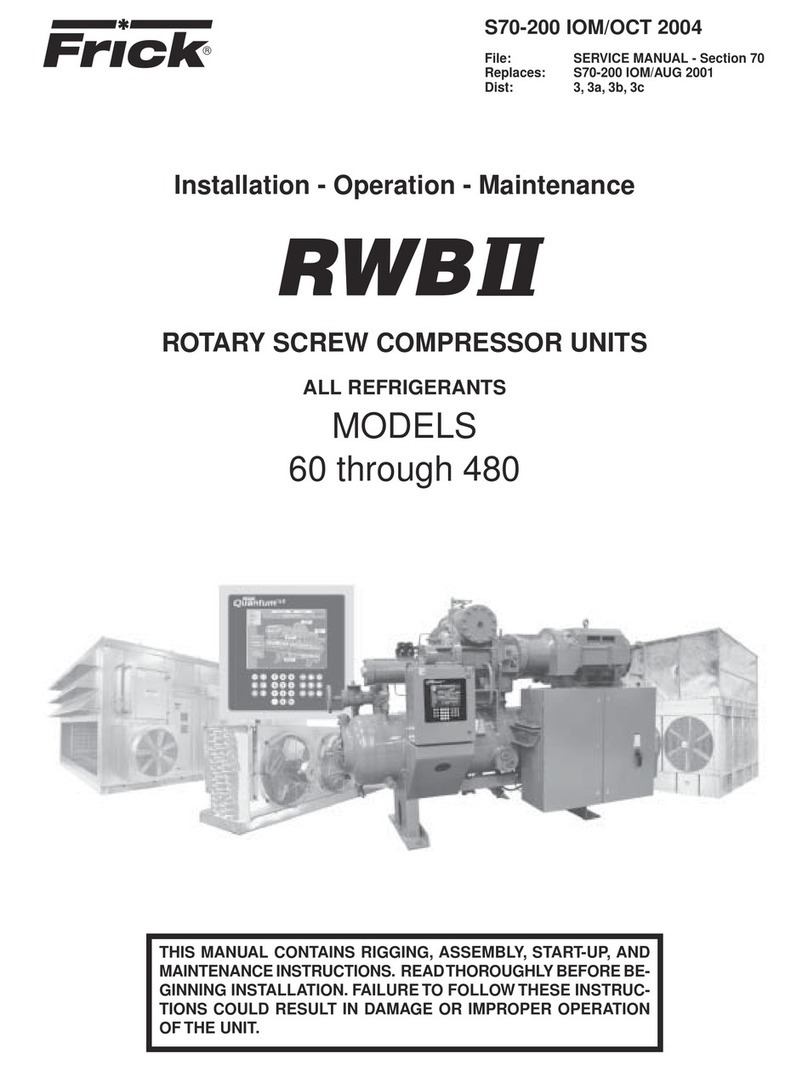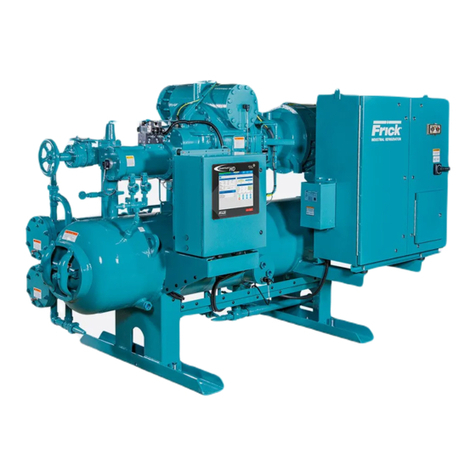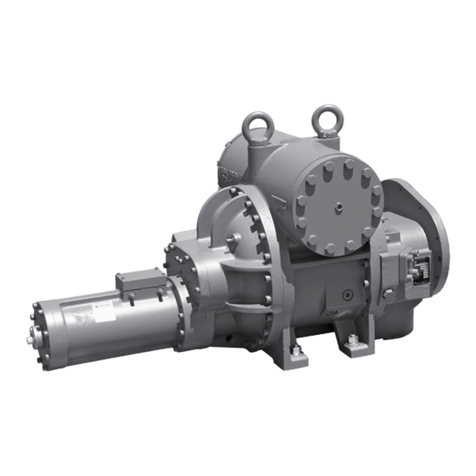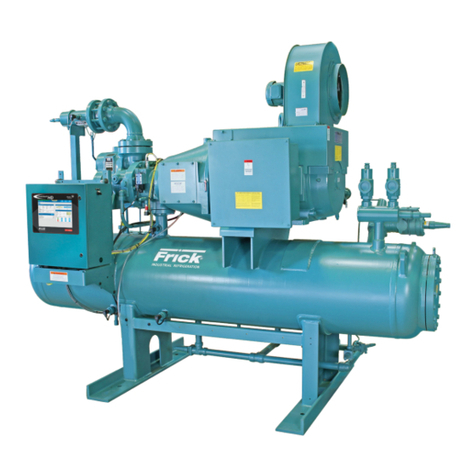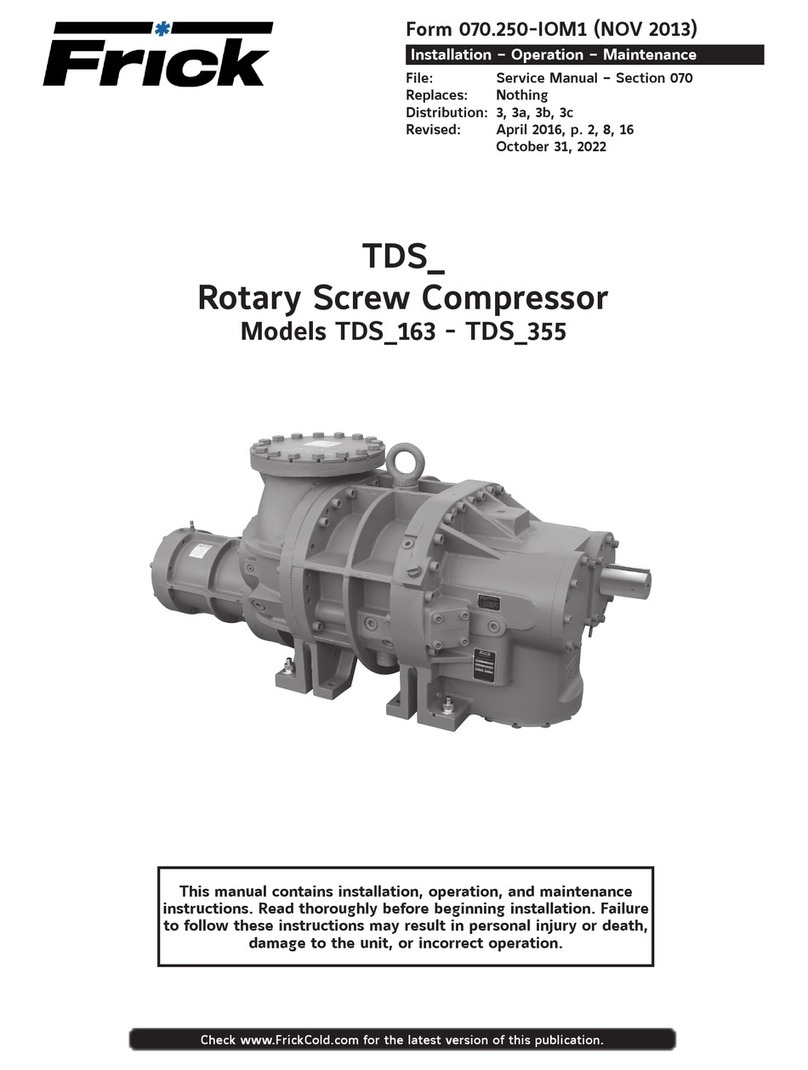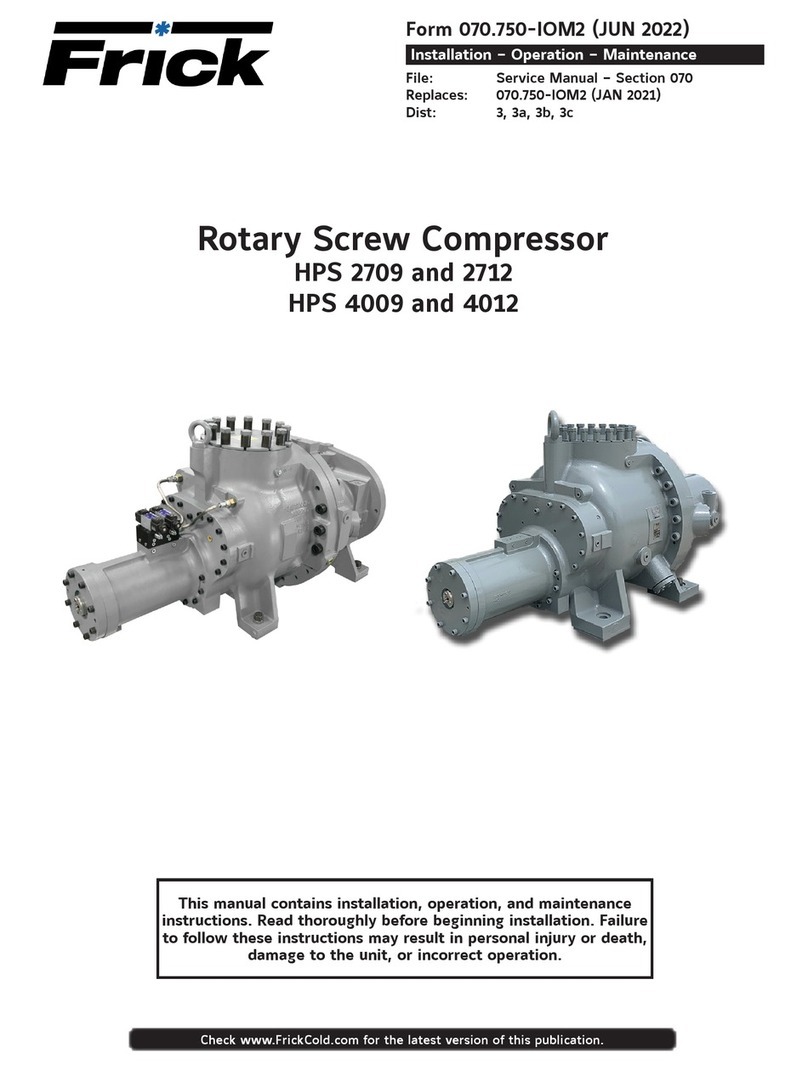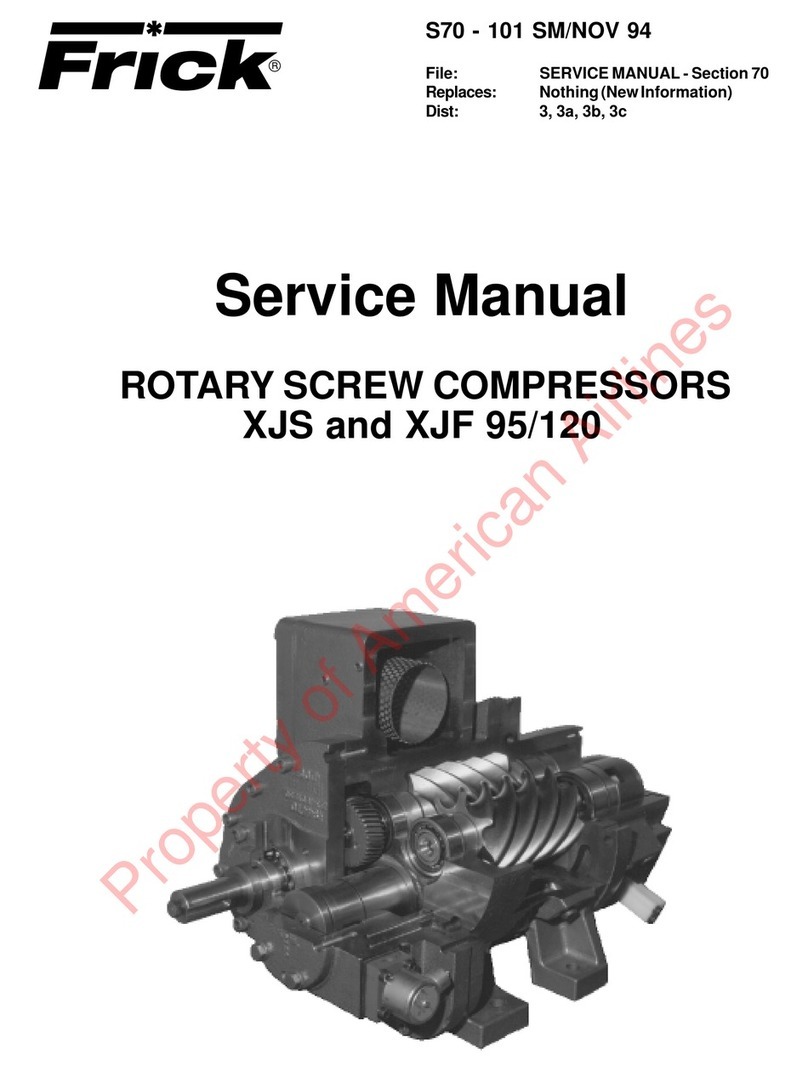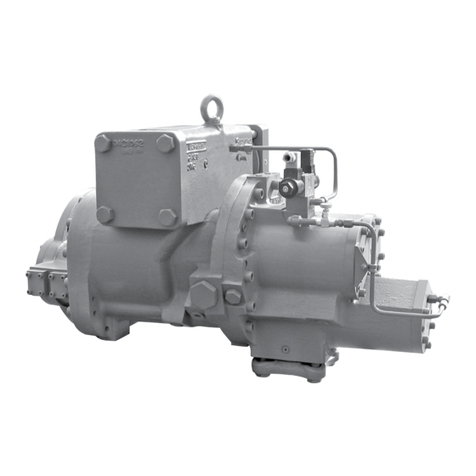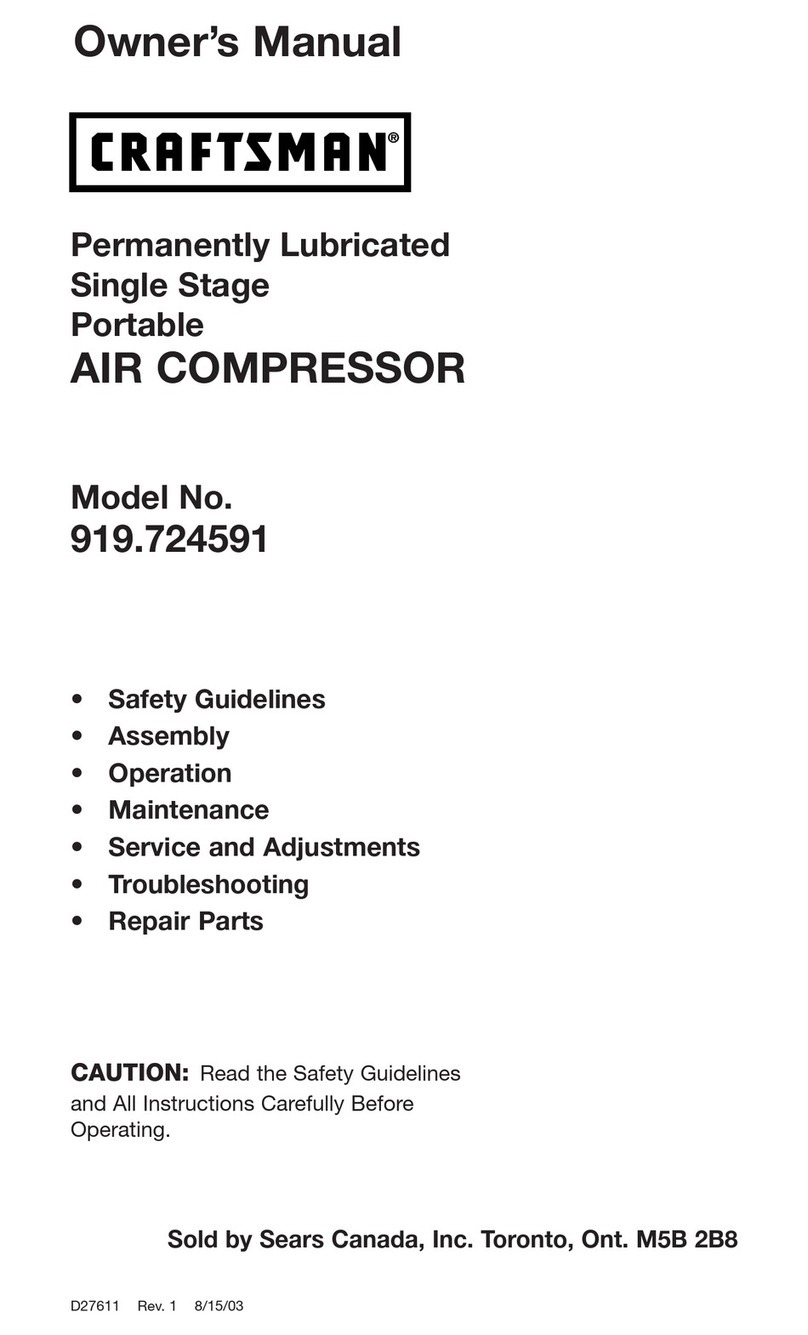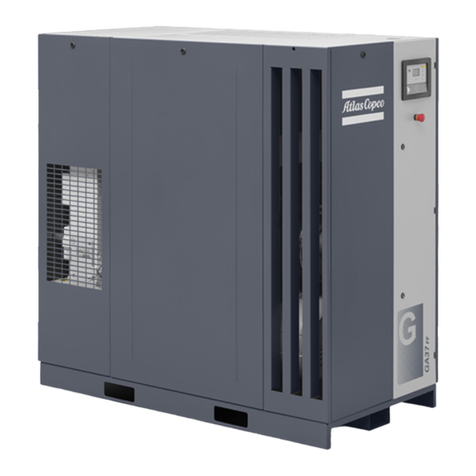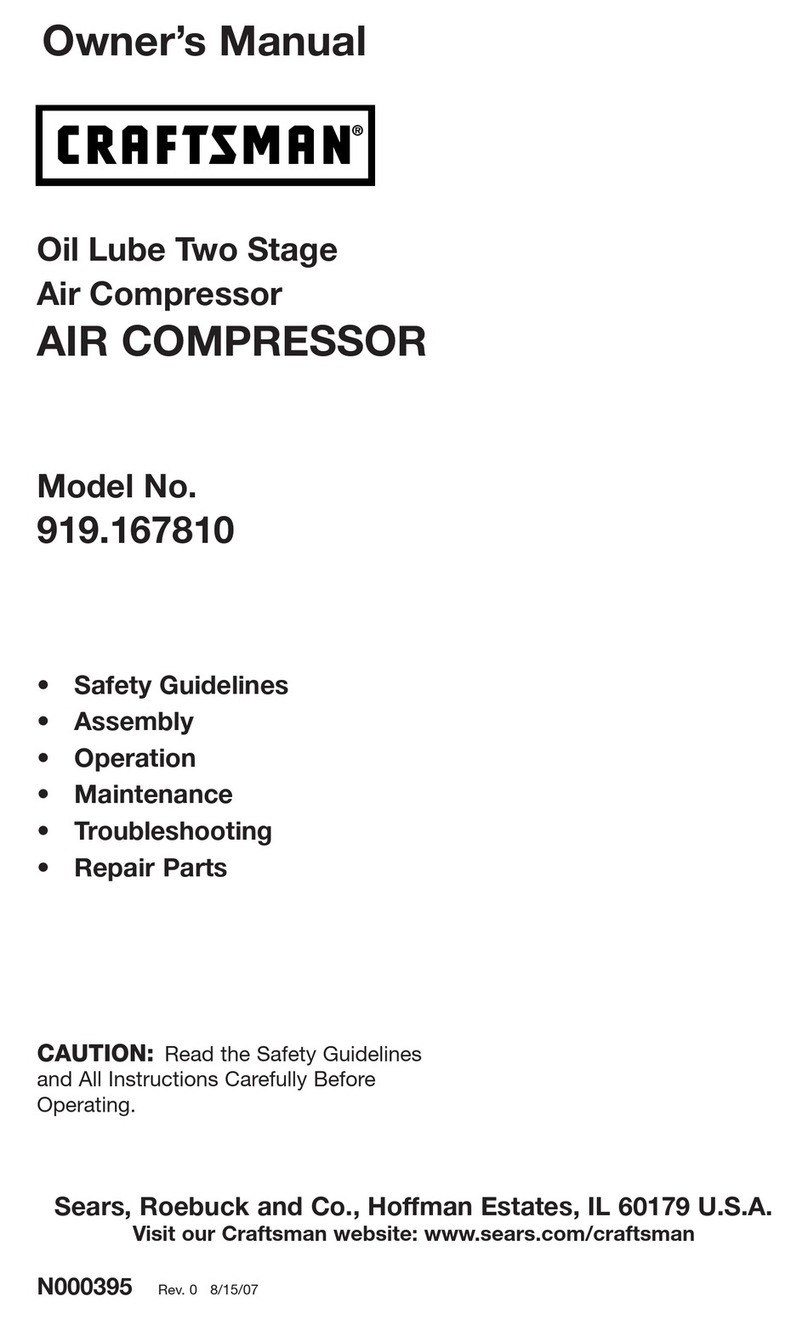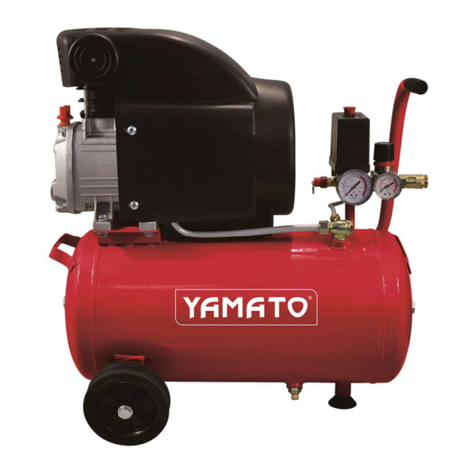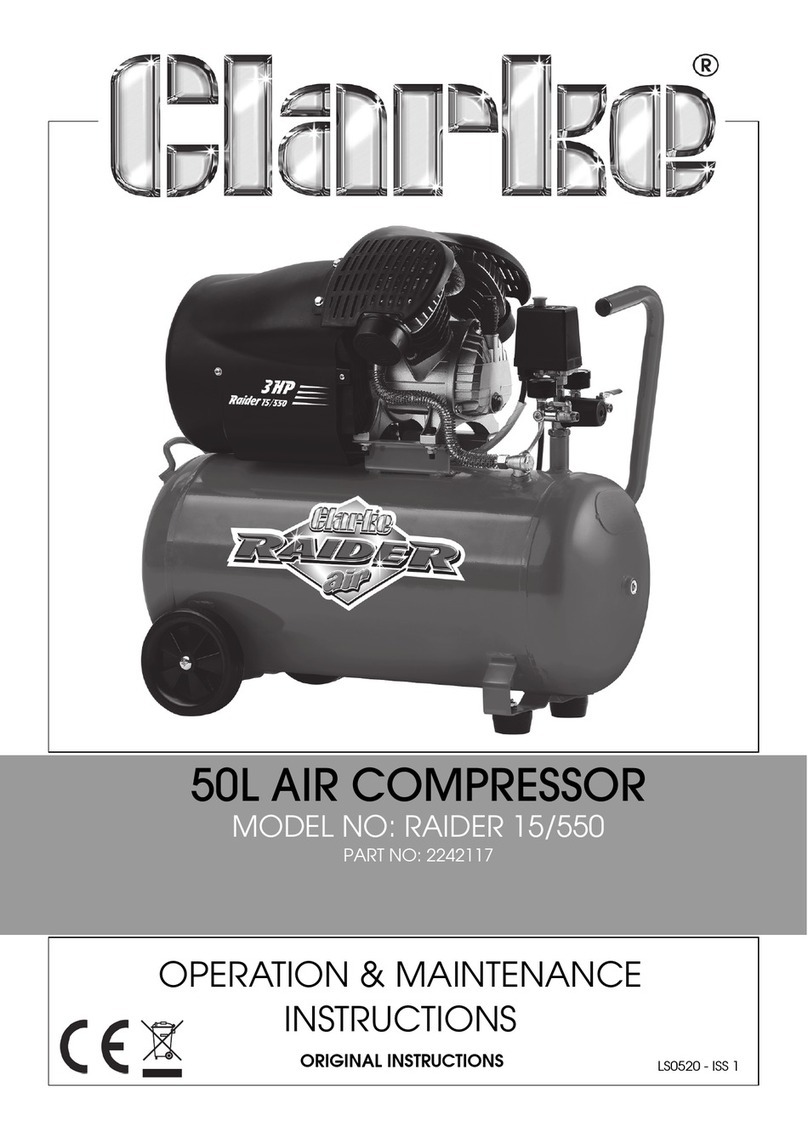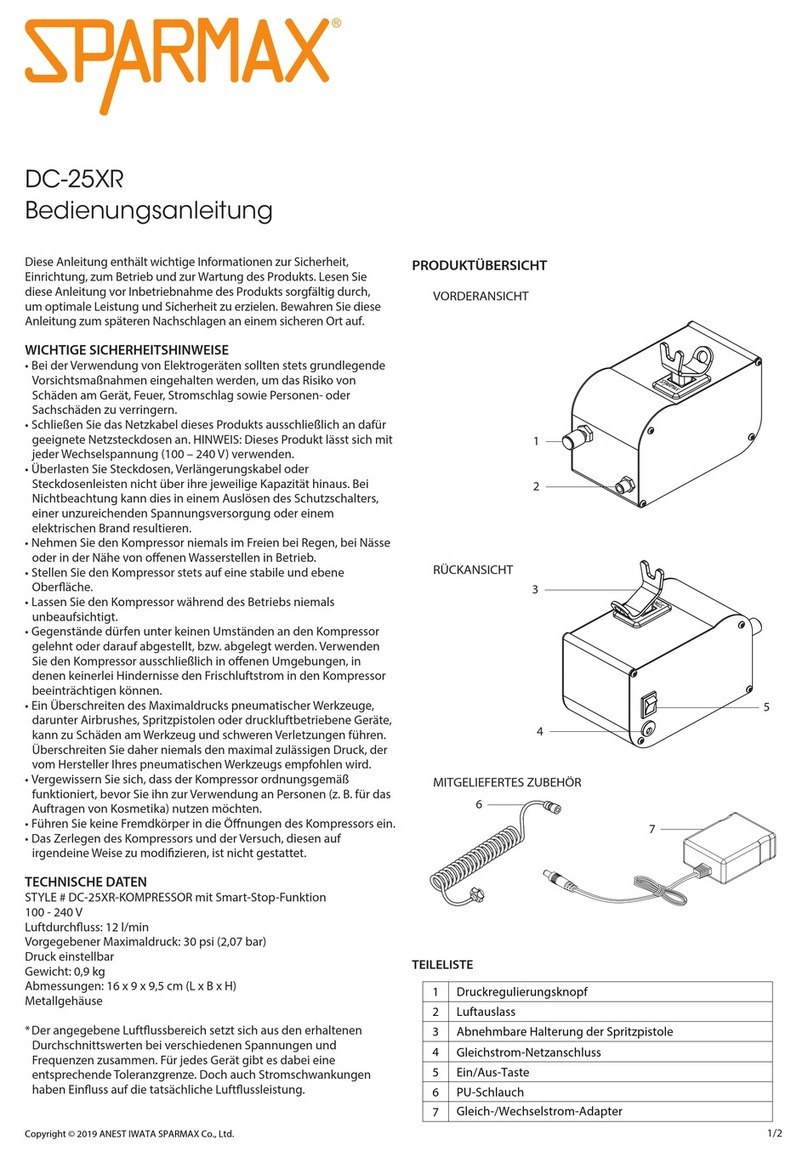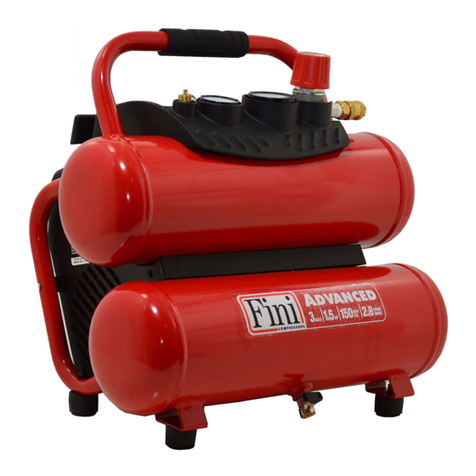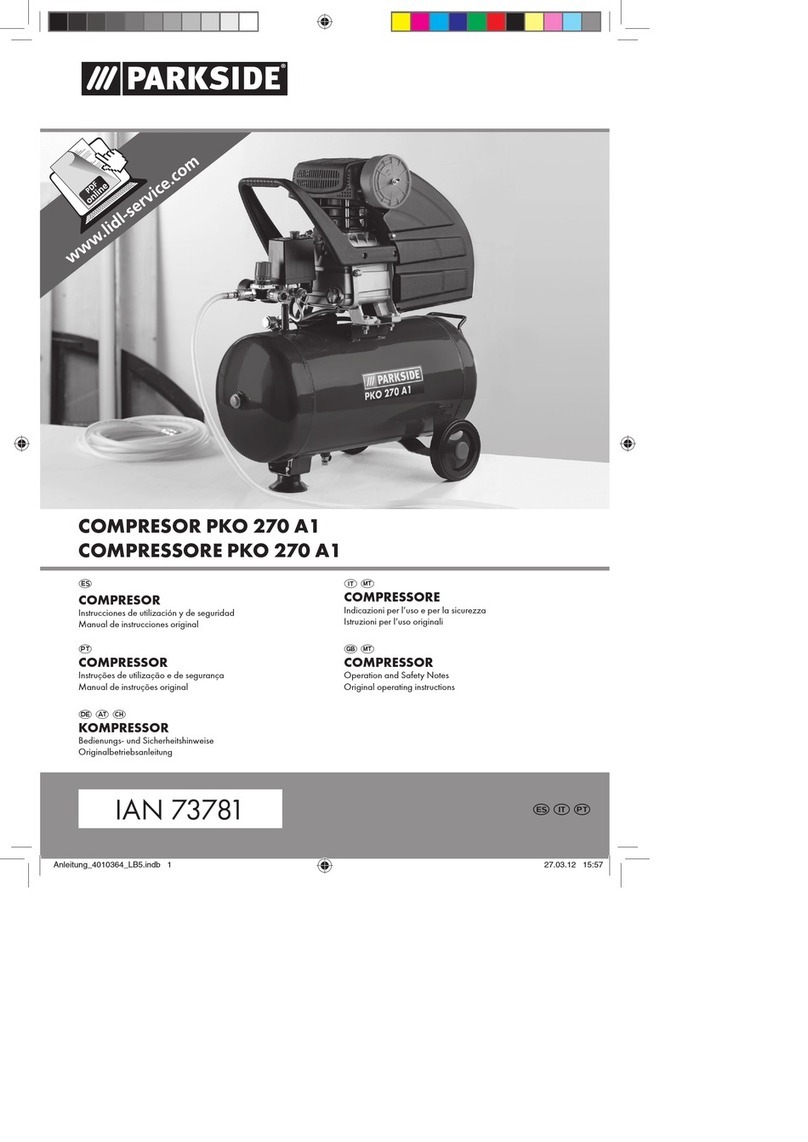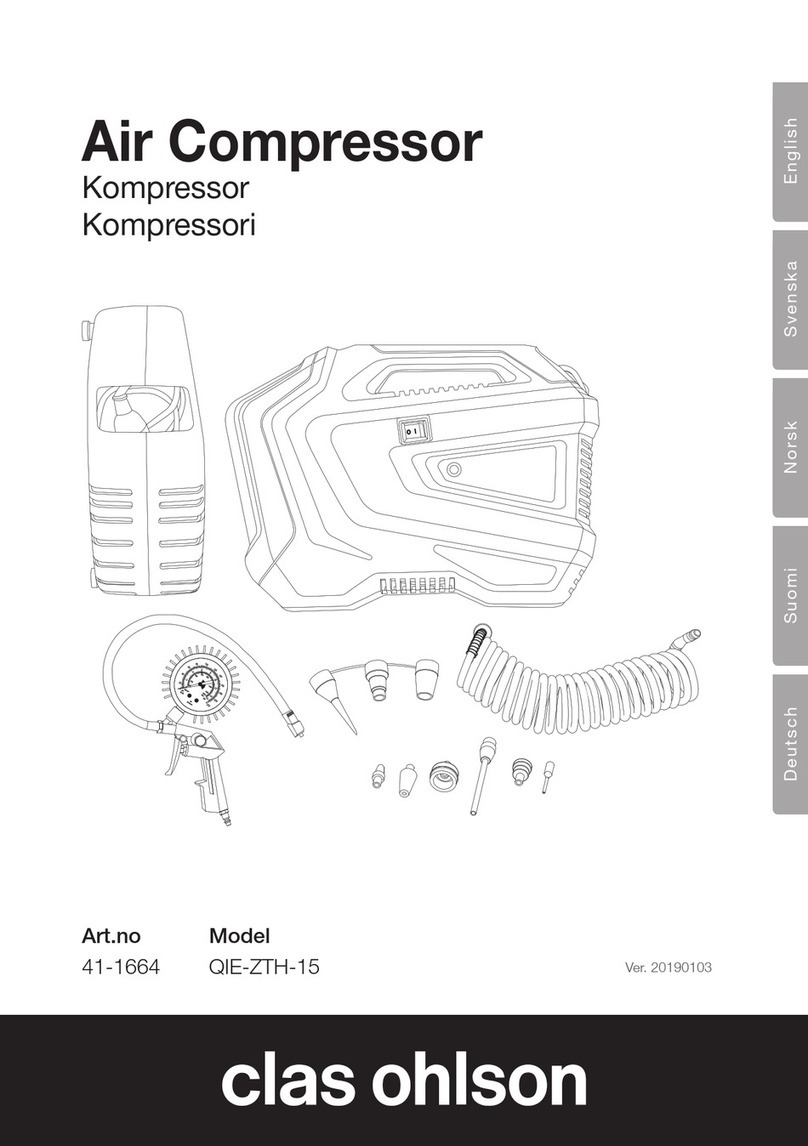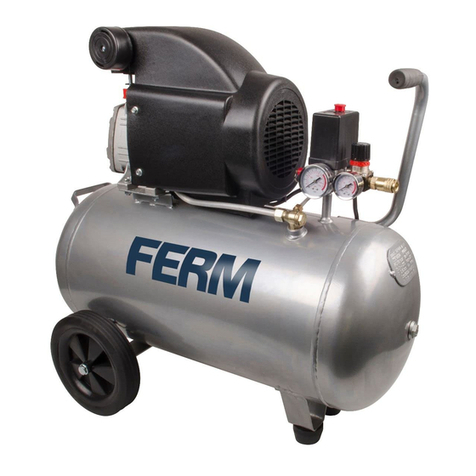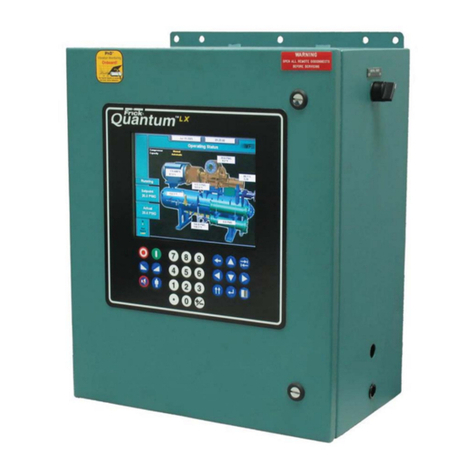
RWB II ROTARY SCREW COMPRESSOR UNITS
INSTALLATION
S70-200 IOM
Page 4 496–856 ONLY!
ALLOWABLE FLANGE LOADS
NOZ. MOMENTS (ft-lbf) LOAD (lbf)
SIZE AXIAL VERT. LAT. AXIAL VERT. LAT.
NPS MRMCMLPV
CVL
1 252525505050
1.25 25 25 25 50 50 50
1.5 50 40 40 100 75 75
2 100 70 70 150 125 125
3 250 175 175 225 250 250
4 400 200 200 300 400 400
5 425 400 400 400 450 450
6 1000 750 750 650 650 650
8 1500 1000 1000 1500 900 900
10 1500 1200 1200 1500 1200 1200
12 1500 1500 1500 1500 1500 1500
14 2000 1800 1800 1700 2000 2000
FOUNDATION
Each RWB II Rotary Screw Compressor Unit is shipped
mounted on a wood skid which must be removed prior to unit
installation.
Allow space for servicing both ends
of the unit. A minimum of 36 inches
is recommended.
The first requirement of the compressor foundation is that it
must be able to support the weight of the compressor pack-
age including coolers, oil, and refrigerant charge. Screw
compressors are capable of converting large quantities of
shaft power into gas compression in a relatively small space
and a mass is required to effectively dampen these rela-
tively high frequency vibrations.
Firmlyanchoring the compressor packageto a suitablefoun-
dation by proper application of grout and elimination of pip-
ing stress imposed on the compressor is the best insurance
for a trouble free installation. Use only the certified general
arrangementdrawingsfrom FrickCo.todeterminethemount-
ing foot locations and to allow for recommended clearances
around the unit for ease of operation and servicing. Foun-
dations must be in compliance with local building codes and
materials should be of industrial quality.
The floor should be a minimum of 6 inches of reinforced con-
creteandhousekeepingpadsarerecommended. Anchorbolts
are required to firmly tie the unit to the floor. Once the unit is
rigged into place (See RIGGING and HANDLING), the feet
must then be shimmed in order to level the unit. The shims
should be placed to position the feet roughly one inch above
the housekeeping pad to allow room for grouting. An expan-
sion-type epoxy grout must be worked under all areas of the
base with no voids and be allowed to settle with a slight out-
ward slope so oil and water can run off of the base.
Wheninstalling on a steelbase, thefollowingguidelinesshould
be implemented to properly design the system base:
1. Use I-beams in the skid where the screw compressor will
be attached to the system base. They should run parallel to
the package feet and support the feet for their full length.
2.The compressor unit feet should be continuously welded to
the system base at all points of contact.
3. The compressor unit should not be mounted on vibration
isolators in order to hold down package vibration levels.
4. The customer’s foundation for the system base should fully
support the system base under all areas, but most certainly
under the I-beams that support the compressor package.
When installing on the upper floors of buildings, extra pre-
cautions should be taken to prevent normal package vibra-
tion from being transferred to the building structure. It may
be necessary to use rubber or spring isolators, or a combi-
nation of both, to prevent the transmission of compressor
vibrationdirectlytothestructure. However,thismayincrease
package vibration levels because the compressor is not in
contact with any damping mass. The mounting and support
of suction and discharge lines is also very important. Rub-
ber or spring pipe supports may be required to avoid excit-
ing the building structure at any pipe supports close to the
compressor package. It is best to employ a vibration expert
in the design of a proper mounting arrangement.
Inanyscrewcompressor installation, suction anddischargelines
should be supported in pipe hangers (preferably within 2 ft. of
vertical pipe run) so that the lines won’t move if disconnected
from the compressor. See table for Allowable Flange Loads.
A licensed architect should be consulted to determine the
proper foundation requirements for any large engine or tur-
bine drive.
When applying screw compressors at high pressures, the
customer must be prepared for package vibration and noise
higherthanthevaluespredictedfornormalrefrigeration duty.
Proper foundations and proper installation methods are vi-
tal;and even then, sound attenuation or noise curtains may
be required to reduce noise to desired levels.
For more detailed information on Screw Compressor Foun-
dations, please request Frick publication S70-210 IB.
RIGGING and HANDLING
THISSCREWCOMPRESSORPACK-
AGEMAYBETOP-HEAVY.USECAU-
TION IN RIGGING AND HANDLING.
The unit can be moved with rigging, using a crane or forklift,
by hooking into the four lifting eyes on the compressor and
motor bases. If no motor is mounted, the lifting ring should
be moved to the compressor side of the center of the unit
because 60 percent of the weight is toward the compressor
end. If a motor is mounted appropriate adjustment in the
liftingpointshould be made to compensateformotor weight.
Adjustment of the lifting point must also be made for any
additions to the standard package such as an external oil
cooler, etc., as the center of balance will be effected.
The unit can be moved with a forklift by forking under the
skid, or it can be skidded into place with pinch bars by push-
ing against the skid. NEVER MOVE THE UNIT BY PUSH-
ING OR FORKING AGAINST THE SEPARATOR SHELL
OR ITS MOUNTING SUPPORTS.
SKID REMOVAL
If the unit is rigged into place the skid can be removed by
takingoffthenutsandboltsthatarefasteningtheunitmount-
ing supports to the skid before lowering the unit onto the
mounting surface.
If the unit is skidded into place remove the cross members
from the skid and remove the nuts anchoring the unit to the
skid. Using a 5 ton jack under the separator raise the unit at
the compressor end until it clears the two mounting bolts.
Spread the skid to clear the unit mounting support, then lower
the unit to the surface.Repeat procedure on opposite end.

